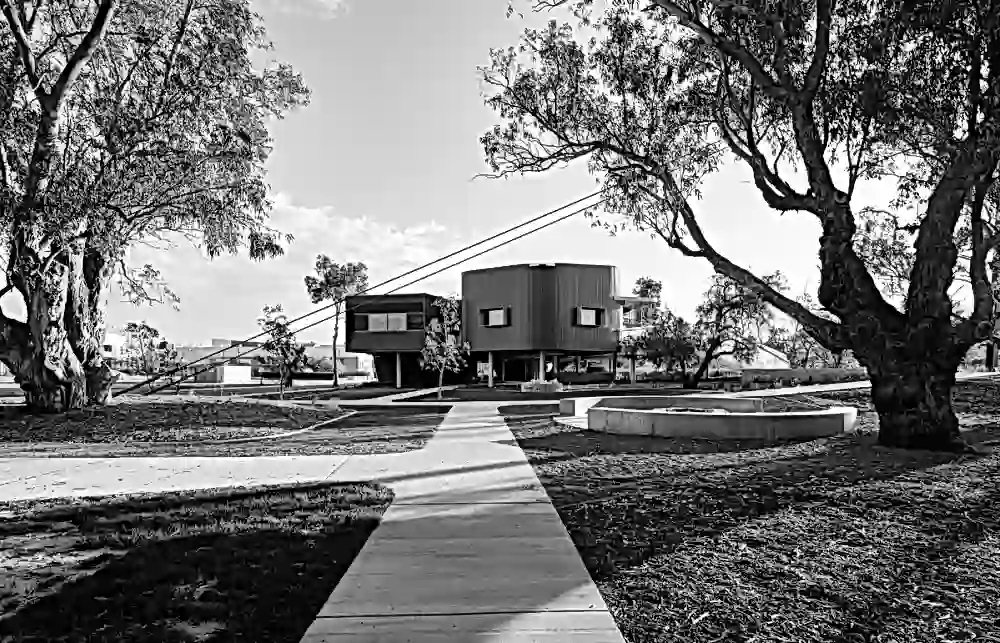The Bilya Koort Boodja Centre for Nyoongar Culture and Environmental Knowledge is a building that shares Nyoongar culture with local community, state, national and international visitors. Designed by Iredale Pederson Hook (IPH), the project supports healthy country, community and culture and exemplifies the potential of Aboriginal leadership in the built environment.
Bilya Koort Boodja is sited on the river foreshore in Ballardong Nyoongar Country in the town of Northam in south-west Western Australia. Through architecture that is welcoming and educational, stories about community, environment and culture are carefully revealed. Throughout the project, IPH foregrounded Aboriginal care and custodianship of Country as key drivers of the project. Many people were brought together to share stories and promote a greater awareness and understanding of First Nations’ perspectives, with visual and physical connections to the Goguljar / Avon River made through building siting and establishing sightlines.
Bilya Koort Boodja is a community building that responds to the perspectives of the local Aboriginal community. Through the design process, the project team determined the building should avoid referencing Western–colonial typologies and building forms existing elsewhere in the town. Instead, the team realised it was more appropriate to give the centre its own unique expression, responding to the site as perceived through Ballardong Nyoongar eyes. To implement this approach, the Shire of Northam extended an open invitation to members of the local Aboriginal community, inviting them to become part of an advisory group for the project. The architects and exhibition designers then worked closely with this group, whose leadership informed a built outcome that is specific to the community and Ballardong Nyoongar Country.
This text was the result of online research borrowing from the GANSW Bilya Koort Boodja Case Study and writing on Bilya Koort Boodja by Iredale Pederson Hook available via their online platform.

